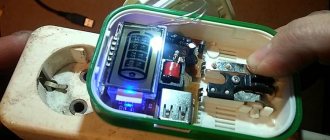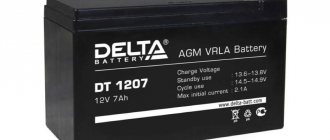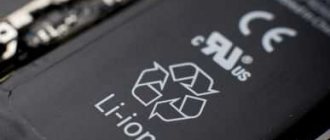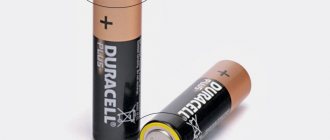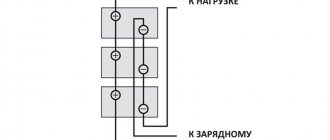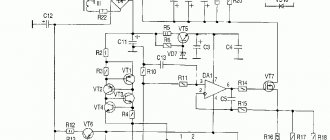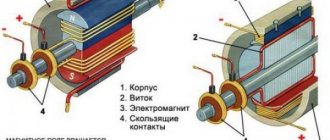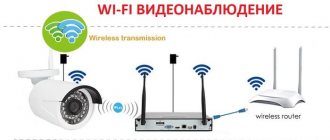The constant development of technology causes the development of its power sources, including batteries. If previously models with liquid electrolyte were most widespread, now gel electrolyte is increasingly being used as the basis for chemical reactions. Despite their high cost and difficulty in maintenance, such energy storage devices have a number of key advantages.
Comparison
What is the difference between a gel battery and a regular acid battery?
It contains the electrolyte not in liquid form, but in a silicon-bound gel substance. Accordingly, all the advantages of such an energy storage device grow from this factor. This:
- Long service life. The gel is not as chemically active as the alkaline-acid liquid in conventional batteries. There are cases of restoration of drive performance characteristics 12-14 years after the end of its service life. Yes, the gel dries out, but the rate of its deterioration is much lower than that of a conventional electrolyte.
- Virtually no maintenance procedures required. Therefore, gel energy storage devices in 99% of cases come in a hermetically sealed case, without the possibility of gaining access to the chemical fillers of the battery cans.
- Very weak sensitivity to shaking, swaying, and even complete turning over. What makes the device ideal for use in small equipment - scooters, hydraulic and regular motorcycles, mopeds. Such gel batteries are popular in the aircraft industry and among shipowners. Smaller sizes compared to classic batteries, with equal capacity, make them ideal for various devices, such as uninterruptible power supply devices.
- Low self-discharge. No more than 20% of energy leaves the drive when there is no load.
- A greater number of charge-discharge cycles compared to classical types allows longer and more intensive use of the energy storage device.
- Less sensitivity to temperature changes.
- No liquid acid solutions. Therefore, even if the seal of the case is broken, the battery will continue to work. This also provides greater safety for humans, since the gel does not flow.
- We can allow the battery to be discharged very low without impairing its reverse charging capabilities.
But as they say, the advantages of the drive also come with some disadvantages in its use, this is most noticeable in particular when charging gel batteries:
- Overheating when recharging. Batteries of this type are very sensitive to overheating. If the gel boils or peels off from the electrodes, then not only can the housing rupture as a result of the release of gases from the boiling gel, but the chemical cycle of energy conservation will also be disrupted. Accordingly, the device will no longer save energy.
- Memory effect. If the charge is carried out incorrectly, the efficiency of the energy element becomes much lower.
Safe charging with a conventional charger
Conventional chargers are not very suitable for charging gel drives, however, they can be used. How to properly charge and charge a gel battery with a regular charger? The basic safety principle for the subsequent operation of the battery is control and correct calculation of current components.
First you need to calculate how much current in amperes is required to charge the battery. To do this, information is taken on the maximum capacity in ampere hours for a specific model (often written directly on the case), and from there 10% is calculated for fast charging, or 5% for a safer current used. For example, the battery has a capacity of 150 Ah (ampere hours), which means the maximum charge current should be set to 15A, and ideally (but the charge recovery time for a gel battery will double) to 7.5A.
As for the volts supplied from the charger terminals, they must be set to the position intended for the standard battery voltage, 6V, 12V or 24V.
Now, as for chargers that do not have a current regulator. It is imperative to lower it, otherwise there will be unforeseen consequences. Amperes can be reduced by connecting a load in parallel to the electric charger - an incandescent lamp. You can use a buffer lead-acid battery for this. With a lamp, the voltage will also drop, but as for the buffer battery, it’s interesting. Scheme:
In theory, a regular battery will lower the amperes, since it is a stronger consumer and is located at the beginning of the parallel circuit. The volt parameters for both batteries should be the same. The remainder of the amperes will go into the gel electrolyte, which will help produce a “softer” charging. Only after assembling the circuit and turning it on should you check whether the gel storage has started to heat up. This can happen if the regular one is faulty.
Correct procedure for charging gel batteries
It must immediately be said that when carrying out all actions, you must strictly follow the given algorithm.
Otherwise, you can seriously damage the battery, and in some cases, experience real physical harm to your health.
To prevent this from happening, you should do the following:
- On the battery case, clean the terminals from excess debris, as well as the clamps from the charger. This will improve contact between devices.
- Be sure to place the battery on a flat and stable surface. A long table is best for this.
- On the charger, set the values from the Cycle Use column. If it is missing, set the parameters at a level from 14 to 14.4 Volts.
- Set the minimum current for the charging process. If the limit is 0, then, accordingly, set the current to zero.
- Check the clamps on the battery terminals as carefully as possible. Essentially, the entire success of charging depends on this. Be sure to check the polarity, whether the crocodiles from the charger are correctly secured and whether they are on the right terminal.
- Apply power to the charger and turn it on. After this, a very important moment begins, at which the owner must be constantly present.
- The charge current is set at 0.5 of the value written in the “Max initial Current” column. Or, if such data is not available, then it is necessary to set a value of about 5% of the nominal battery capacity. That is, if your capacity is 50 Amperes, then you need to set it to 2.5 Amperes. After that, continue charging. After about 5-10 minutes, the charging current will reach the level specified in Max initial Current. This means that with the same capacity of 50 Amperes, the charge current will reach 5 Amperes or that same 10%.
- In the event that the current begins to go beyond the value of 14.4 Volts (which sometimes happens on those chargers that have weak current regulation), it is worth reducing the voltage supplied to the battery. By the way, such charging is called “DC charging”.
- If you do not touch the charger, continue charging in this mode with constant voltage. This means that the current will decrease, but the voltage itself will remain within the required range. It is worth considering that with such charging, only 80% of the nominal capacity is replenished, and not all 100%. However, sometimes this is enough for the car to come to life.
- The very last step in how to charge a gel battery is that this process must be carried out with a voltage of 14.1 Volts, and the current must be equal to 1 or less than 1 Ampere.
Specialized chargers for gel batteries
There are also specialized chargers that, having low ampere output currents, allow you to charge such drives either in a fully automatic mode or semi-manually. Such chargers are made taking into account the charging characteristics of gel batteries. The most complex of them allow you to restore batteries of different voltages. When purchasing simpler ones, you need to pay attention to the correspondence of the output current (if there is no switch).
Reference! It is not recommended to charge gel batteries more than a couple of times a year.
Is it possible to charge a gel battery with a regular charger?
The question of how to charge a gel battery with a conventional charger is often asked. But the technology for charging a battery with liquid electrolyte and gel is different. Can gel batteries be charged from a regular charger? A high charging current will melt the gel, which will not recover. There are other problems:
- If the battery is almost charged, the gel will not melt, but it will not charge.
- The charging current will destroy the gel structure, even with an additional setting.
- It is impossible to fulfill the conditions for staged charging with changing current and voltage parameters.
- Heating the battery will lead to decomposition of the electrolyte, so you should not keep the device charging for too long.
Everything is explained more simply. Connecting to a regular charger will inevitably warm up. If the case was cooled quickly, liquid has already formed in it. Gradually it will dissolve the remaining gel. A sign of destruction is heating of the housing during operation.
Since it is not always possible to buy a “smart” charger, a way has been developed to charge a gel battery from conventional chargers. This will require an intermediary - another battery, even an old, used one. It will work as an energy transformer, reducing the charging current parameters.
Both batteries need to be connected in parallel, the charger must be connected to the transformer battery. The impact on a gel battery will be milder. After making sure that charging is in progress, you need to determine the degree of heating of the gel battery case. If there is no heating, you can restore the container within 2 hours. After measuring the parameters, depending on the readings, continue charging for another hour or two. Is it possible to charge the battery if it starts to heat up immediately? No, it needs to be disposed of.
Requirements
Basic requirements for specialized memory devices:
- Regulation of the charging voltage of the gel battery.
- Adaptation of the current used for various external conditions (air temperature in the room where the charge level is restored).
- Adaptation of the number of amperes, depending on the temperature of the battery itself at various stages.
- Automated voltage change, depending on the stage. It is desirable to have a charger that allows saturation of the battery in three stages: 1 - increased voltage;
- 2 - constant voltage support, with a decrease in the number of amperes;
- 3 - minimum recharging with a minimum of volts and amperes.
Full charge time
How long does it take to charge a gel battery? It is very easy to calculate - the battery capacity ampere*hours is divided by the set current of the charger. The result obtained is the time in hours that the battery requires to be completely saturated with energy. This time cannot be exceeded! Overheating will begin. It is even recommended to keep charging a little less time. Let the battery not be charged to 100%, but at least it will remain intact.
Advice! When charging, if the battery becomes hot, it must be immediately disconnected from the charger and allowed to cool. If this is not done, the boiling gel will destroy the battery beyond repair. In addition, when recharging, it is worth reducing the current.
How to check a gel battery for the level of already accumulated charge, so as not to miss the moment of shutdown? To do this, use a regular multimeter. The battery is periodically disconnected from the charger and the voltage at the storage terminals is measured. If the voltage there rises above 12.6V for 12 volts, 6.6V for 6V, or 24.6V for 24V, then the charge is fully charged. There is no point in charging further, especially since this can lead to heating of the element of the battery collector cans.
How to properly charge a gel battery without damaging it
Some specialized publications, as well as frequent forum regulars, claim that a gel battery can be completely discharged and stored in this state for a long time.
Unfortunately, such statements are extremely far from the truth and, even more, are in some way harmful.
A gel battery, like any other acid battery, is very sensitive to deep discharges. His lead plates, like others, are destroyed, which obviously does not have a positive effect.
It is also worth considering that if you start charging the power source, a large voltage will first pass through.
Consequently, this can also negatively affect performance and operation, because during such a charging procedure the plates may crumble or otherwise become deformed.
So such procedures after a complete discharge can lead to the fact that the battery will be impossible to use in principle.
Therefore, it is strictly not recommended to either bring the gel battery to a state of complete discharge or store it in this form.
In automobile parts stores and at enterprises that produce this kind of battery, the operation of these devices is maintained through periodic charging (if we are talking about long-term storage of the product) so that it is ready to be put into operation immediately. In this case, owners are guided by the special “Standby use” marking, which is indicated either on the device body or in technical documents.
Typically for a gel battery this value is in the range of 6.7 - 7.5 Volts. If the voltage on the battery is below these parameters, it is urgently necessary to recharge it. If this is not done, deep discharge may occur, which will cause a problem in the operation of the device.
Maintenance of gel batteries
Over time, the gel dries out, losing its electrolytic properties. This happens, of course, at a lower speed than in lead-acid batteries. But this is a common reason for a decrease in battery efficiency.
How to restore and revive the gel battery in such cases? The density can be increased to a certain limit by adding distilled water to the battery jars. To do this, carefully remove the caps on each of the battery tanks, then the rubber plugs, then pour the distillate into each with a small 2 ml syringe. With the plugs open, the battery is left for three to four hours to allow the reaction to occur and the liquid to be absorbed into the gel. Check the voltage level at the battery terminals. If everything is in order, the caps are put back in place and the battery is charged.
Actually, increasing the density, as well as periodically recharging up to 100% twice a year, is actually all the available maintenance for gel batteries.
How to charge 12 volt gel batteries
12 volt gel batteries can be automotive (starter) or traction. We’ll figure out how and how to properly charge both, and what’s the difference.
The starter battery is characterized by an operating mode when up to 2-3C20 of current is supplied to start the engine for a short time. The charge is restored during the period of movement when the generator produces energy. But will a gel battery in a car be fully charged? On-board electronics do not allow capacity to be restored to 100%. Therefore, periodic recharging to nominal is necessary. If you use the iMAX B6 universal car charger or other similar charger, charging the gel battery will not be difficult.
Having set the necessary parameters - nominal voltage, number of cells, charging current on the “smart” charger, you need to indicate the type of battery. A universal charger with a microprocessor will take care of how to properly charge a gel car battery.
How to charge a 12 V traction battery with gel electrolyte? The algorithm has been slightly changed here. In the saturation phase, the charging current restores the battery capacity. But since the capacity is large, a current of 0.1-1.0 C20 is used. C20 is the digital value of capacity, measured in A/h. When the nominal voltage at the terminals reaches 13.8-14.4 V, the charge is about 80%.
The absorption stage begins. Active ions pass into the massive lead plates, like into a storeroom. Due to diffusion, the charge accumulates, the current is absorbed less and less, down to 0.02C20. During absorption, the current does not depend on the charger, only on the capacitance of the plates. It is this process that allows energy to be used evenly and for a long time during discharge.
An indicator characterizing the operation of a traction battery is charging efficiency. This indicates what percentage of the energy received is used effectively. Gel batteries have an efficiency rate of 90%.
How to check a gel battery
Some types of testing of gel drives:
- First you need to lightly shake the battery while listening. If an extraneous sound is heard inside, then with a 90% probability the battery plates have come loose. This type of storage device can only be recycled. It will not be possible to restore it at home.
- If the battery is swollen or even one bank on it is “swollen,” it is also beyond repair.
- If everything seems to be intact, but the voltage on the contacts is zero, and the gel battery does not take a charge, then this is a classic discharge of the device to zero. A charger will help here; it can be used to “push” the battery so that it begins to gain energy. Why do they first try to charge it with an increased current (for 12V -15V, for 6-8V, for 24 - 26V). As soon as the battery begins to charge, the voltage is lowered to standard charging parameters. In this case, the drive's operating parameters will most likely deteriorate.
Conclusion
The future lies in the creation of such storage devices. Smaller size (and often weight), with a capacity similar to its older lead-acid counterparts, is a big plus. And all this despite the fact that they are much more universal in use, safe, and can also be used in a wide range of devices, from automotive equipment to microelectronics.
https://www.youtube.com/watch?v=inwlslONUuE
You may also be interested.
Batteries 0
